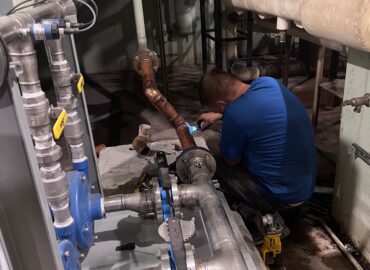One of the most common uses for a pump is to draw water (or other liquids) up from out of a well. They can be used for anything from pulling water for a small family farm, to helping complicated industrial operations properly maintain flow of coolant and other materials around the facility.
As such, there are a number of different pumps which can be used on wells, each with their own usage scenarios and optimal deployments. In this article, we wanted to briefly touch on some of the most common types.
Typical Pumps Used in Wells
1 – Shallow Well Pumps
As the name suggests, these are smaller pumps designed specifically for situations where the water is near to the ground. They rarely pump liquids upwards more than about 20-25 feet. These are non-submersible pumps, placed just outside the well housing for easy access. If needed, it’s possible to add boosters or extra water-pressure tanks to boost the flow.
2 – Jet Pumps
Jet pumps are also non-submersible and can be designed for shallow 25-foot wells, or for deeper wells, of around 100-110 feet. Either way, the method of operation is about the same. Jet pumps use impellers to create suction which draws the liquid upward. The liquid is sent through narrow tubes which increase its pressure and speed, helping it move upwards. For deeper wells, extra ejector assemblies may be used to add more energy to the system.
3 – Submersible Pumps
Submersible pumps are almost exclusively used in deeper wells, generally when the well is at least 90 feet deep. The pumping mechanism is located near or at the bottom of the well, while being attached to a power source at the top. These pumps use a series of impellers to pull the water in, then send it upwards in stages to maintain pressure.
4 – Lift Station Pumps
Lift station pumps are most typically seen in wastewater treatment and are built to handle thicker liquids to other pumps. Wastewater typically moves through a series of holding tanks, with the most unclean fluid kept at the lowest point in the system, allowing solids to settle to the bottom. So, lift station pumps are designed to move the lighter liquid part of the material upwards and into higher-elevation tanks.
FloRight Pumps & Controls are America’s experts in pumping systems. With more than 30 year’s experience, we can help you install new systems or maintain old ones. Click here to contact us with your questions or problems.

